Themed collection The Creative World of Porous Materials

Introduction to the themed issue in honor of Dr François Fajula: “An exciting journey in the creative world of ordered porous materials and their applications”
This themed issue, dedicated to François Fajula, includes the latest achievements in the field of ordered porous solids, which is among the most creative, fascinating and attractive fields of chemistry.
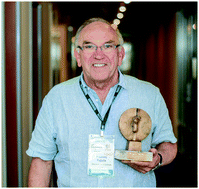
New J. Chem., 2016,40, 3930-3932
https://doi.org/10.1039/C6NJ90018F
Surface molecular engineering in the confined space of templated porous silica
Recent developments in molecular surface engineering inside the confined space of porous materials are surveyed including a new nomenclature proposal.
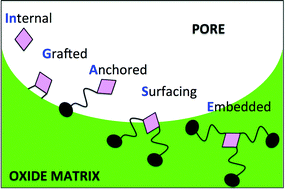
New J. Chem., 2016,40, 4115-4131
https://doi.org/10.1039/C5NJ03437J
Recent advances in the synthesis of hierarchically porous silica materials on the basis of porous glasses
The methods for integrating an additional pore system in glass-based monoliths are reviewed with an emphasis on sintering and pseudomorphic transformation routes.
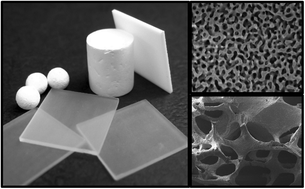
New J. Chem., 2016,40, 4095-4114
https://doi.org/10.1039/C5NJ03591K
Zeolite science and technology at Eni
This article reviews the results obtained in the synthesis, characterization and applications of zeolites and related microporous materials, focusing on catalytic processes developed in Eni research laboratories over the last 40 years.
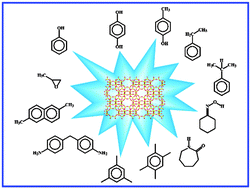
New J. Chem., 2016,40, 4061-4077
https://doi.org/10.1039/C5NJ03498A
Diffusion in nanoporous materials: fundamental principles, insights and challenges
The increasing complexity of nanoporous catalysts and adsorbents presents a challenge to both the experimental measurement and theoretical modeling of transport behavior.
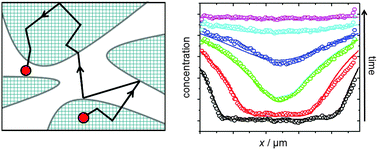
New J. Chem., 2016,40, 4027-4048
https://doi.org/10.1039/C5NJ02836A
Structured catalysts for dry reforming of methane
This review highlights the progress in designing oxide catalysts with well defined structures for dry reforming of methane.

New J. Chem., 2016,40, 4049-4060
https://doi.org/10.1039/C5NJ03268G
Multiscale adsorption and transport in hierarchical porous materials
This review presents the state-of-the-art of multiscale adsorption and transport in hierarchical porous materials.

New J. Chem., 2016,40, 4078-4094
https://doi.org/10.1039/C5NJ03194J
Nature-inspired optimization of hierarchical porous media for catalytic and separation processes
Nature-inspired structuring at the meso-scale: broad macropores separate the mesoporous catalyst grains.
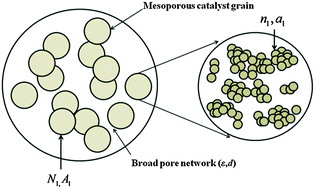
New J. Chem., 2016,40, 4016-4026
https://doi.org/10.1039/C5NJ03406J
Characterization of microscopic disorder in reconstructed porous materials and assessment of mass transport-relevant structural descriptors
Pore-level simulations of flow and mass transport validate the morphological measures of efficiency, which show potential for guiding the rational design of materials.
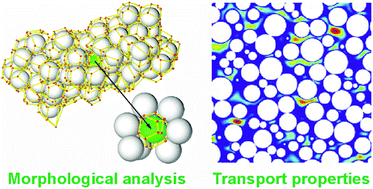
New J. Chem., 2016,40, 3993-4015
https://doi.org/10.1039/C5NJ03346B
A design concept of amphiphilic molecules for directing hierarchical porous zeolite
This review describes a design concept of novel amphiphilic molecules for a one-step preparation of hierarchically porous zeolites containing mesopores with certain orders.
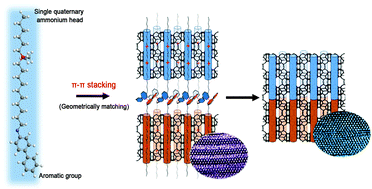
New J. Chem., 2016,40, 3982-3992
https://doi.org/10.1039/C5NJ02949J
Diversity of layered zeolites: from synthesis to structural modifications
The most attractive achievements in the research area of layered zeolites are summarized, including synthesis, modification strategies and catalytic applications. The challenges for future research on these types of porous materials are also proposed.

New J. Chem., 2016,40, 3968-3981
https://doi.org/10.1039/C5NJ02829A
Giant flexibility of crystallized organic–inorganic porous solids: facts, reasons, effects and applications
Giant structural flexibility is a characteristic of organic–inorganic frameworks. This perspective describes its history, its behaviours, the analysis of its structural reasons at its consequences in terms of properties and applications.
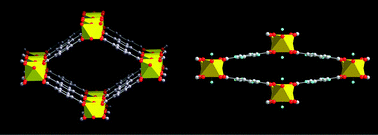
New J. Chem., 2016,40, 3950-3967
https://doi.org/10.1039/C5NJ02747K
Perspectives on zeolite-encapsulated metal nanoparticles and their applications in catalysis
Recent strategies for the design of zeolites with unusual architectures and porosities offer many opportunities for the encapsulation of catalysts.
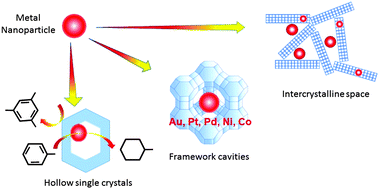
New J. Chem., 2016,40, 3933-3949
https://doi.org/10.1039/C5NJ02608C
Alkaline-assisted stannation of beta zeolite as a scalable route to Lewis-acid catalysts for the valorisation of renewables
Alkaline-assisted stannation comprises a scalable one-pot method to incorporate tin centres with a Lewis-acid character in beta zeolite for the isomerisation of renewables.
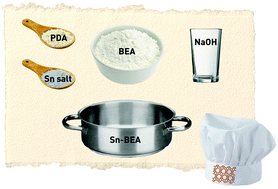
New J. Chem., 2016,40, 4136-4139
https://doi.org/10.1039/C5NJ01834J
Periodic mesoporous organosilicas derived from amphiphilic bulky polymethylsiloxane
Depending on the synthetic conditions (surfactant, acid, base, and presence or absence of TEOS), the sol–gel polymerization of functionalized polyorganosiloxane affords various textured silica-based materials.

New J. Chem., 2016,40, 4132-4135
https://doi.org/10.1039/C5NJ01824B
Highly active enzymes immobilized in large pore colloidal mesoporous silica nanoparticles
Carbonic anhydrase and horseradish peroxidase are immobilized inside the ordered material by click reactions. Colorimetric assays prove their catalytic activity.
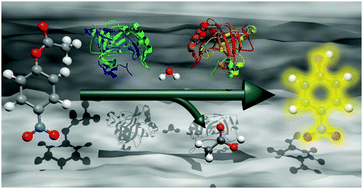
New J. Chem., 2019,43, 1671-1680
https://doi.org/10.1039/C8NJ04585B
Multifunctional core–shell hybrid nano-composites made using Pickering emulsions: a new design for therapeutic vectors
A model of therapeutic nanovectors was developed for creating original prodrug@Fe2O3@porous silica architectures. Fe2O3 catalytic and magnetic properties were used for controlling the kinetics of drug release.
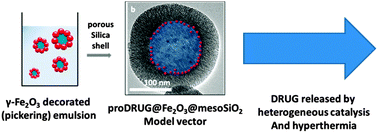
New J. Chem., 2016,40, 4436-4446
https://doi.org/10.1039/C6NJ00446F
Au/TiO2 photocatalysts prepared by solid grinding for artificial solar-light water splitting
Calcining mechanical mixtures of TiO2 and AuPPh3Cl generates Au/TiO2 nanocomposites with strong Au–TiO2 interaction and high solar light activity.
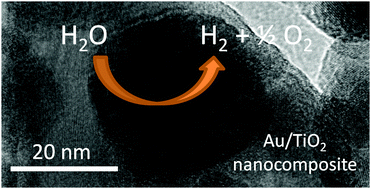
New J. Chem., 2016,40, 4428-4435
https://doi.org/10.1039/C5NJ03053F
Influence of the pore architecture on the selective conversion of ethene to propene and butenes over medium pore zeolites
Conversion of ethene on selected zeolites structures allowed for high selectivities for propene and butenes.

New J. Chem., 2016,40, 4414-4419
https://doi.org/10.1039/C5NJ03668B
Hierarchically porous monolithic silica with varying porosity using bis(trimethoxysilyl)arenes as precursors
Isomers of bis-(trimethoxysilyl)arenes were synthesized and used as organosilica precursors for the preparation of macro-mesoporous hybrid silica monoliths.
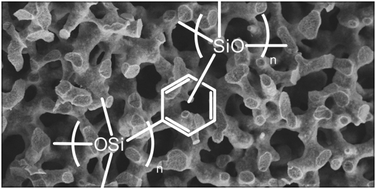
New J. Chem., 2016,40, 4455-4463
https://doi.org/10.1039/C6NJ00758A
Transport properties of catalyst supports studied by pulsed field gradient (PFG) and 2D exchange (EXSY) NMR spectroscopy
2D-EXSY and PFG 129Xe NMR provide a powerful means for probing tortuosity and pore connectivity in bimodal alumina catalysts.
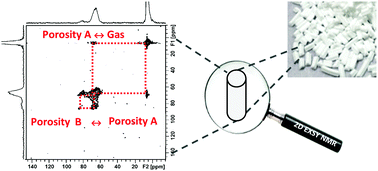
New J. Chem., 2016,40, 4447-4454
https://doi.org/10.1039/C5NJ02952J
Silica mesophases intercalated by cross-linked micelles of a sustainable oleyl diamine surfactant and metal ion uptake properties thereof
Polymeric forms of eco-friendly oleyl diamine surfactant intercalated in silica are effective in binding Cu(II) and Pb(II) from aqueous solution.
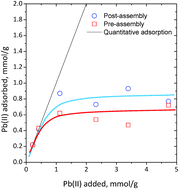
New J. Chem., 2016,40, 4406-4413
https://doi.org/10.1039/C5NJ02848E
Impact of chabazite SSZ-13 textural properties and chemical composition on CO2 adsorption applications
A narrow pore zeolite was synthesized with different Si/Al ratios and micro- to nanoparticle size where both played an important role in CO2 adsorption.
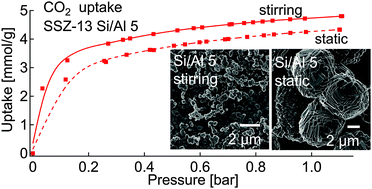
New J. Chem., 2016,40, 4375-4385
https://doi.org/10.1039/C5NJ03205A
Synthesis and properties of MFI zeolites with microporous, mesoporous and macroporous hierarchical structures by a gel-casting technique
3D hierarchical porous ZSM-5 zeolite as a catalytic material for the cracking of n-hexadecane is reported.
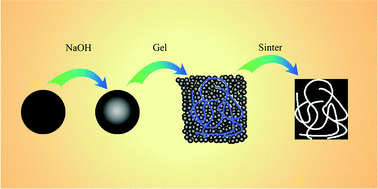
New J. Chem., 2016,40, 4398-4405
https://doi.org/10.1039/C5NJ03387J
Accelerated synthesis of Sn-BEA in fluoride media: effect of H2O content in the gel
Sn-BEA synthesis in concentrated gels results in 2.5–4 fold reduction of crystallization time and formation of smaller zeolite crystals.
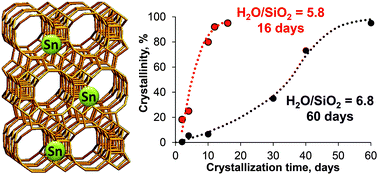
New J. Chem., 2016,40, 4367-4374
https://doi.org/10.1039/C6NJ00394J
Influence of the porous texture of SBA-15 mesoporous silica on the anatase formation in TiO2–SiO2 nanocomposites
TiO2–SiO2 composites with 44 wt% of anatase exhibit a better MO degradation rate than those with fully crystallized anatase.
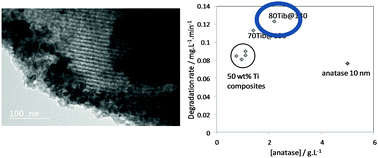
New J. Chem., 2016,40, 4386-4397
https://doi.org/10.1039/C5NJ02859K
Nanocomposites with both structural and porous hierarchy synthesized from Pickering emulsions
Templating polycondensation of furfural and phloroglucinol by O/W emulsions stabilized by CNT-carboxymethylcellulose composite particles allowed preparing conductive and magnetic microcapsules.
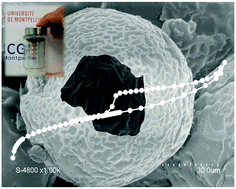
New J. Chem., 2016,40, 4344-4350
https://doi.org/10.1039/C5NJ03248B
Aerosol-assisted synthesis of mesoporous aluminosilicate microspheres: the effect of the aluminum precursor
Spray-dried mesoporous aluminosilicates, with spherical morphology, high surface area and accessible porosity, have been synthesized under mild acidic aqueous conditions by using different aluminum precursors.
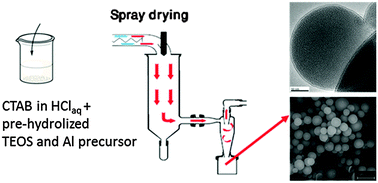
New J. Chem., 2016,40, 4420-4427
https://doi.org/10.1039/C5NJ02825F
Continuous synthesis of nanostructured silica based materials in a gas–liquid segmented flow tubular reactor
Synthesizing core–shell particles SiO2@mSiO2, mSiO2 and Au@SiO2 in a continuous tubular segmented reactor.
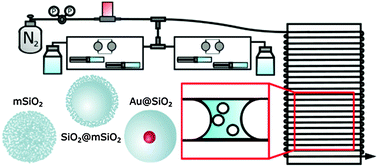
New J. Chem., 2016,40, 4361-4366
https://doi.org/10.1039/C5NJ03033A
Insights into the pore structure of KIT-6 and SBA-15 ordered mesoporous silica – recent advances by combining physical adsorption with mercury porosimetry
The first successful example of Hg porosimetry on KIT-6 silicas is demonstrated. This study provides a more thorough understanding of the textural properties of the mesostructures of KIT-6 and SBA-15 silicas.
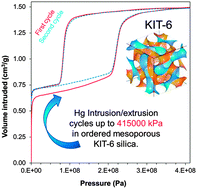
New J. Chem., 2016,40, 4351-4360
https://doi.org/10.1039/C5NJ03466C
Impact of extreme downsizing of *BEA-type zeolite crystals on n-hexadecane hydroisomerization
The extreme diminution of the crystallite size increases accessibility of Brønsted acid sites but decreases their strength.
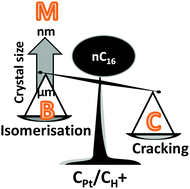
New J. Chem., 2016,40, 4335-4343
https://doi.org/10.1039/C5NJ02837J
Synthesis of an IWW-type germanosilicate zeolite using 5-azonia-spiro[4,4]nonane as a structure directing agent
An IWW-type zeolite was formed using azonia-spiro[4,4]nonane as a template. This material shows low Ge-content and can be further degermanated.
![Graphical abstract: Synthesis of an IWW-type germanosilicate zeolite using 5-azonia-spiro[4,4]nonane as a structure directing agent](/en/Image/Get?imageInfo.ImageType=GA&imageInfo.ImageIdentifier.ManuscriptID=C5NJ03094C&imageInfo.ImageIdentifier.Year=2016)
New J. Chem., 2016,40, 4319-4324
https://doi.org/10.1039/C5NJ03094C
Phospholipid–silica mesophases formed in hydroalcoholic solution as precursors of mesoporous silica
The fusion of lipid bilayers in sponge silica–lecithin composites is favoured by natural cosurfactants-induced local opposite curvatures.
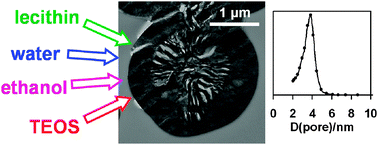
New J. Chem., 2016,40, 4314-4318
https://doi.org/10.1039/C5NJ03563E
Silicon carbide foam as a porous support platform for catalytic applications
This review provides an overview of the use of foam-structured SiC as a porous support platform in some typical catalytic processes both for gas-phase and liquid-phase reactions, such as H2S selective oxidation, Friedel–Crafts benzoylation and Fischer–Tropsch synthesis.
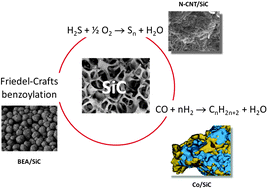
New J. Chem., 2016,40, 4285-4299
https://doi.org/10.1039/C5NJ02847G
Support effects in rare earth element separation using diglycolamide-functionalized mesoporous silica
The work aims at exploring the role of pore structure, texture and morphology of various DGA-functionalized mesoporous silica materials on their rare earth element (REE) adsorption performances, both in batch and flow-through systems.

New J. Chem., 2016,40, 4325-4334
https://doi.org/10.1039/C5NJ03147H
Embryonic ZSM-5 zeolites: zeolitic materials with superior catalytic activity in 1,3,5-triisopropylbenzene dealkylation
Embryonic ZSM-5 zeolites have more accessible microporosity than their zeolite offsprings and are therefore better catalysts to convert bulky molecules.
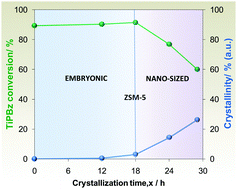
New J. Chem., 2016,40, 4307-4313
https://doi.org/10.1039/C5NJ03310A
HMF etherification using NH4-exchanged zeolites
The reversible dissociation of NH4+ ions in the intra-cages of zeolites is correlated with their catalytic reactivity for HMF etherification.
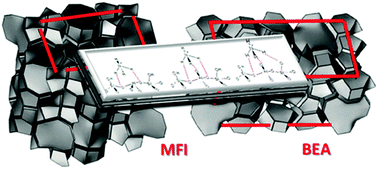
New J. Chem., 2016,40, 4300-4306
https://doi.org/10.1039/C5NJ03461B
Properties of methylene blue in the presence of zeolite nanoparticles
Properties of methylene blue modified by incorporation in the large pores of LTL and BEA type zeolites, and stabilization on the external surface of small pore LTA type zeolite.
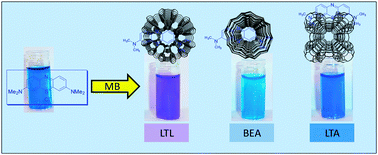
New J. Chem., 2016,40, 4277-4284
https://doi.org/10.1039/C5NJ02643A
Potential of templated mesoporous aluminas as supports for HDS CoMo catalysts
Activities in thiophene hydrodesulfurization were increased by a factor three when using aluminas, as support for CoMo catalysts, prepared using an optimized sol–gel method.
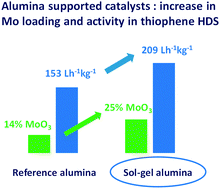
New J. Chem., 2016,40, 4258-4268
https://doi.org/10.1039/C5NJ02865E
Enhancement of lithium transport by controlling the mesoporosity of silica monoliths filled by ionic liquids
A systematic study of the effect of the mesopore diameter of silica monoliths with hierarchical porosity (meso-/macroporosity) on charge transport of confined ionic liquid with lithium salt shows an optimum for mesopore of 10 nm diameter.
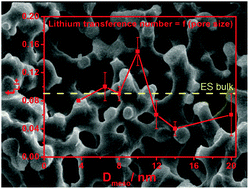
New J. Chem., 2016,40, 4269-4276
https://doi.org/10.1039/C5NJ03318G
Synthesis and structure characterization of zinc and cadmium dipeptide coordination polymers
A twofold (black, red) interpenetrated network of a Zn(Gly-L-Phe)2 coordination polymer, with hydrogen bonds (green) between neighboring layers.
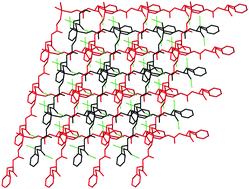
New J. Chem., 2016,40, 4252-4257
https://doi.org/10.1039/C5NJ03001C
SAPO-34 templated by dipropylamine and diisopropylamine: synthesis and catalytic performance in the methanol to olefin (MTO) reaction
This paper describes a detailed investigation on SAPO-34 synthesis templated by isomeric amines and the catalytic performances in the MTO reaction.
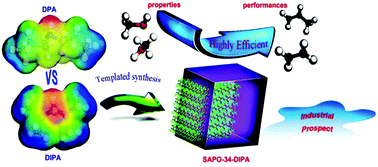
New J. Chem., 2016,40, 4236-4244
https://doi.org/10.1039/C5NJ02351C
Catalytic n-pentane conversion on H-ZSM-5 at high pressure
Highly stable, high pressure n-pentane conversion on H-[Al]ZSM-5 yields C3 and C4 alkanes and heavier hydrocarbons to balance H/C ratio.
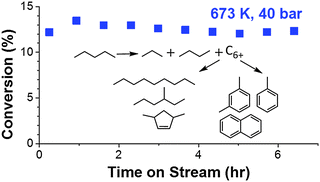
New J. Chem., 2016,40, 4245-4251
https://doi.org/10.1039/C5NJ02733K
Monitoring by in situ neutron diffraction of simultaneous dehydration and Ni2+ mobility in partially exchanged NaY zeolites
The incoherent signal in neutron diffraction patterns allows correlating in real time hydration–dehydration levels and structural changes in zeolites.
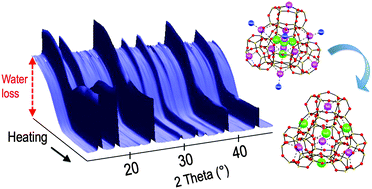
New J. Chem., 2016,40, 4228-4235
https://doi.org/10.1039/C5NJ02918J
Intermediate pickering emulsion formation as a means for synthesizing hollow mesoporous silica nanoparticles
Particle and surfactant-stabilized emulsion droplets formed in situ serve as templates for hollow silica nanoparticle growth.
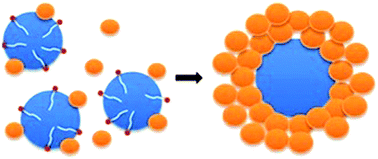
New J. Chem., 2016,40, 4217-4222
https://doi.org/10.1039/C5NJ02855H
Mesoporous MEL, BEA, and FAU zeolite crystals obtained by in situ formation of carbon template over metal nanoparticles
Highly crystalline zeolites with intracrystalline mesopores are synthesized through a straightforward and feasible templating method.

New J. Chem., 2016,40, 4223-4227
https://doi.org/10.1039/C5NJ02809D
Hierarchical ZSM-5 zeolite with uniform mesopores and improved catalytic properties
Uniform mesopores are generated in hierarchical ZSM-5 by a mesopore narrowing treatment, showing enhanced activity in the acylation of 2-methoxynaphthalene.
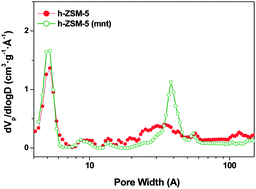
New J. Chem., 2016,40, 4206-4216
https://doi.org/10.1039/C5NJ02856F
Topological analysis of non-granular, disordered porous media: determination of pore connectivity, pore coordination, and geometric tortuosity in physically reconstructed silica monoliths
Different approaches are applied and compared, which are universally applicable to quantify pore coordination, pore and pore-throat connectivity, and geometric tortuosity.
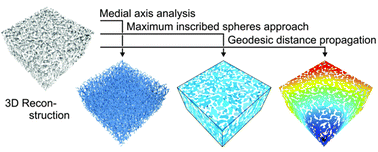
New J. Chem., 2016,40, 4187-4199
https://doi.org/10.1039/C5NJ02814K
Dehydration of AlPO4-34 studied by variable-temperature NMR, XRD and first-principles calculations
Complementary techniques elucidate water–framework interactions in different states of dehydration, two of which have not been observed before.
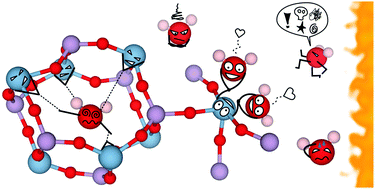
New J. Chem., 2016,40, 4178-4186
https://doi.org/10.1039/C5NJ02838H
Preparation of mesoporous TiO2–C composites as an advanced Ni catalyst support for reduction of 4-nitrophenol
Ordered mesoporous Ni/TiO2–C composites with highly dispersed nickel and TiO2 nanoparticles have been synthesized via a multi-component co-assembly method.
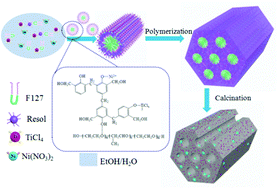
New J. Chem., 2016,40, 4200-4205
https://doi.org/10.1039/C5NJ02976G
Effect of pretreatment atmosphere on the activity and selectivity of Co/mesoHZSM-5 for Fischer–Tropsch synthesis
Co/mesoHZSM-5 pretreatment in different atmospheres changes FT activity and CH4 selectivity by affecting Co dispersion and reducibility.
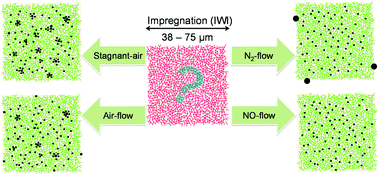
New J. Chem., 2016,40, 4167-4177
https://doi.org/10.1039/C5NJ02462E
Synthesis and structural characterization of Zn-containing DAF-1
Four crystallographically distinct N,N′-di-isopropyl-imidazolium cations, fluoride anions and water molecules fill the channels of the zincoaluminophosphate Zn-DAF-1.
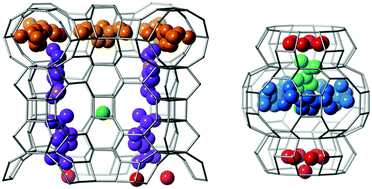
New J. Chem., 2016,40, 4160-4166
https://doi.org/10.1039/C5NJ02897C
Hierarchically porous titanium phosphate monoliths and their crystallization behavior in ethylene glycol
A new hierarchically porous titanium phosphate monolithic material is synthesized via a sol–gel method and its crystallization in ethylene glycol is observed.
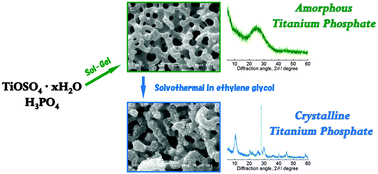
New J. Chem., 2016,40, 4153-4159
https://doi.org/10.1039/C5NJ02820E
Nickel and molybdenum containing mesoporous catalysts for ethylene oligomerization and metathesis
Ethylene is converted into propylene by one-pot cascade reactions over catalysts prepared using a commercial mesoporous non-ordered silica as a support.

New J. Chem., 2016,40, 4146-4152
https://doi.org/10.1039/C5NJ02586A
Synthesis of Al-MTW with low Si/Al ratios by combining organic and inorganic structure directing agents
Al-rich MTW zeolites show large pore accessibility, high Brönsted acidity and high activity for the cracking of n-decane.
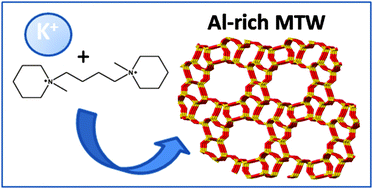
New J. Chem., 2016,40, 4140-4145
https://doi.org/10.1039/C5NJ01203A
Downsizing the K-CHA zeolite by a postmilling-recrystallization method for enhanced base-catalytic performance
K-CHA nanocrystals prepared by a beadmilling and postmilling-recrystallization for high performance base-catalysis.
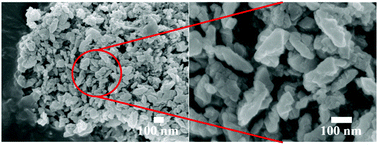
New J. Chem., 2016,40, 492-496
https://doi.org/10.1039/C5NJ02052B
About this collection
This themed issue, dedicated to François Fajula, includes the latest achievements in the field of ordered porous solids, which is among the most creative, fascinating and attractive fields of chemistry.